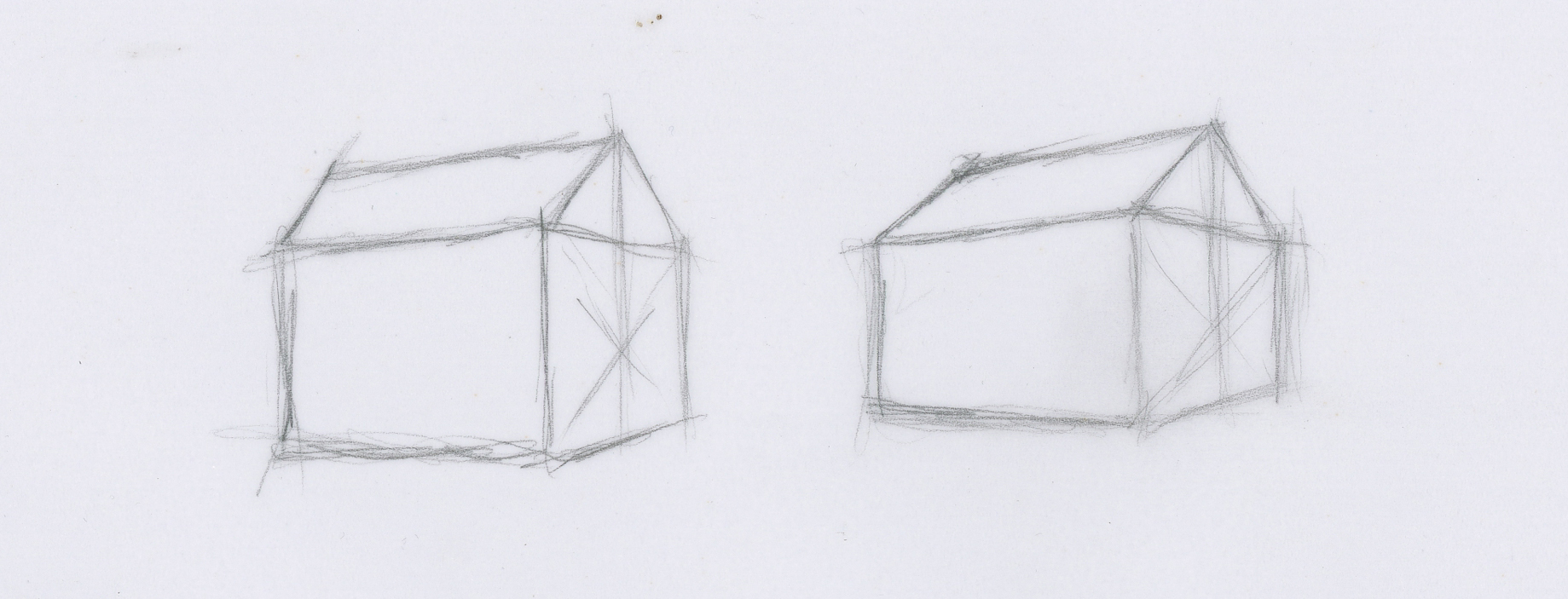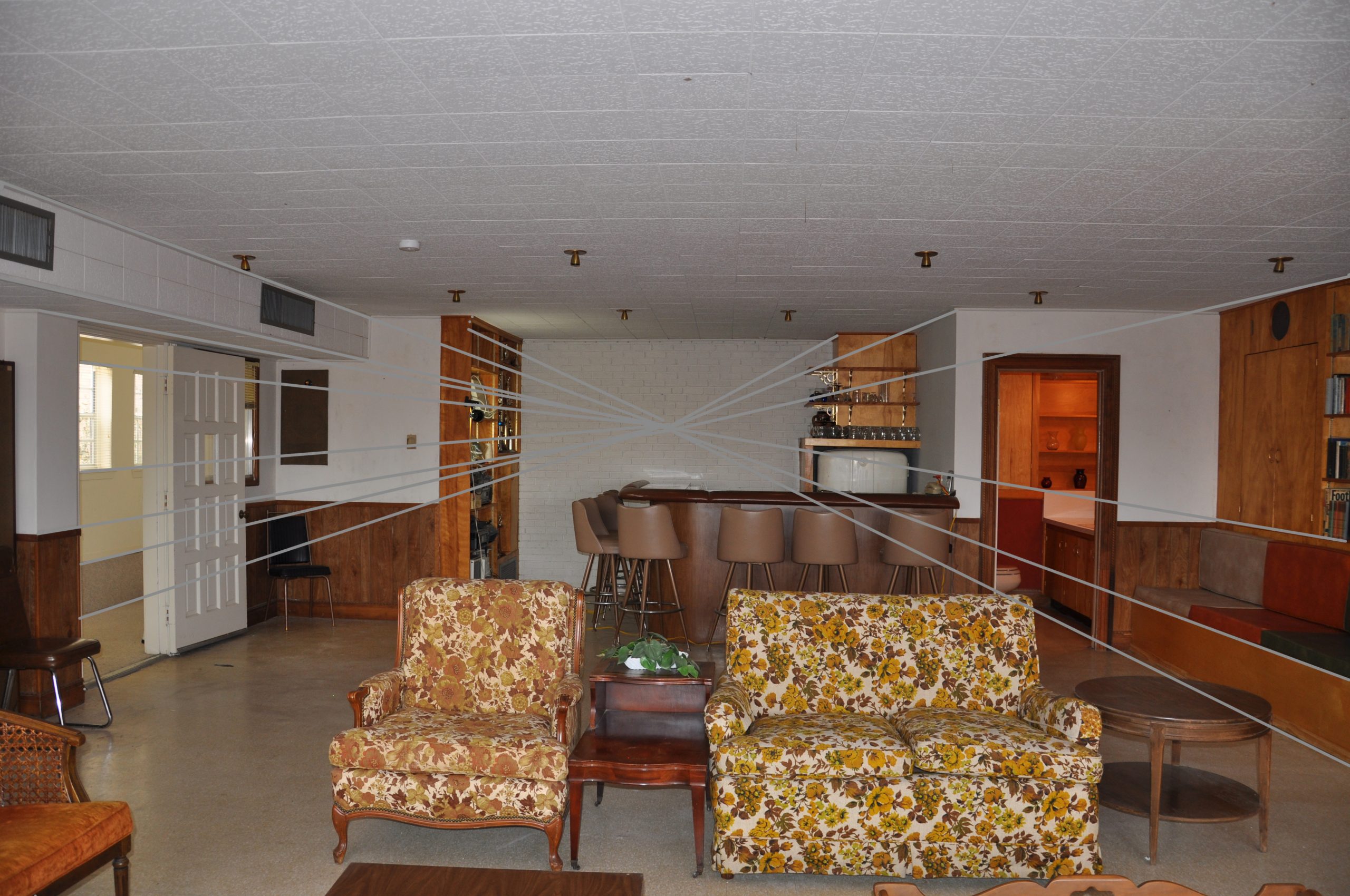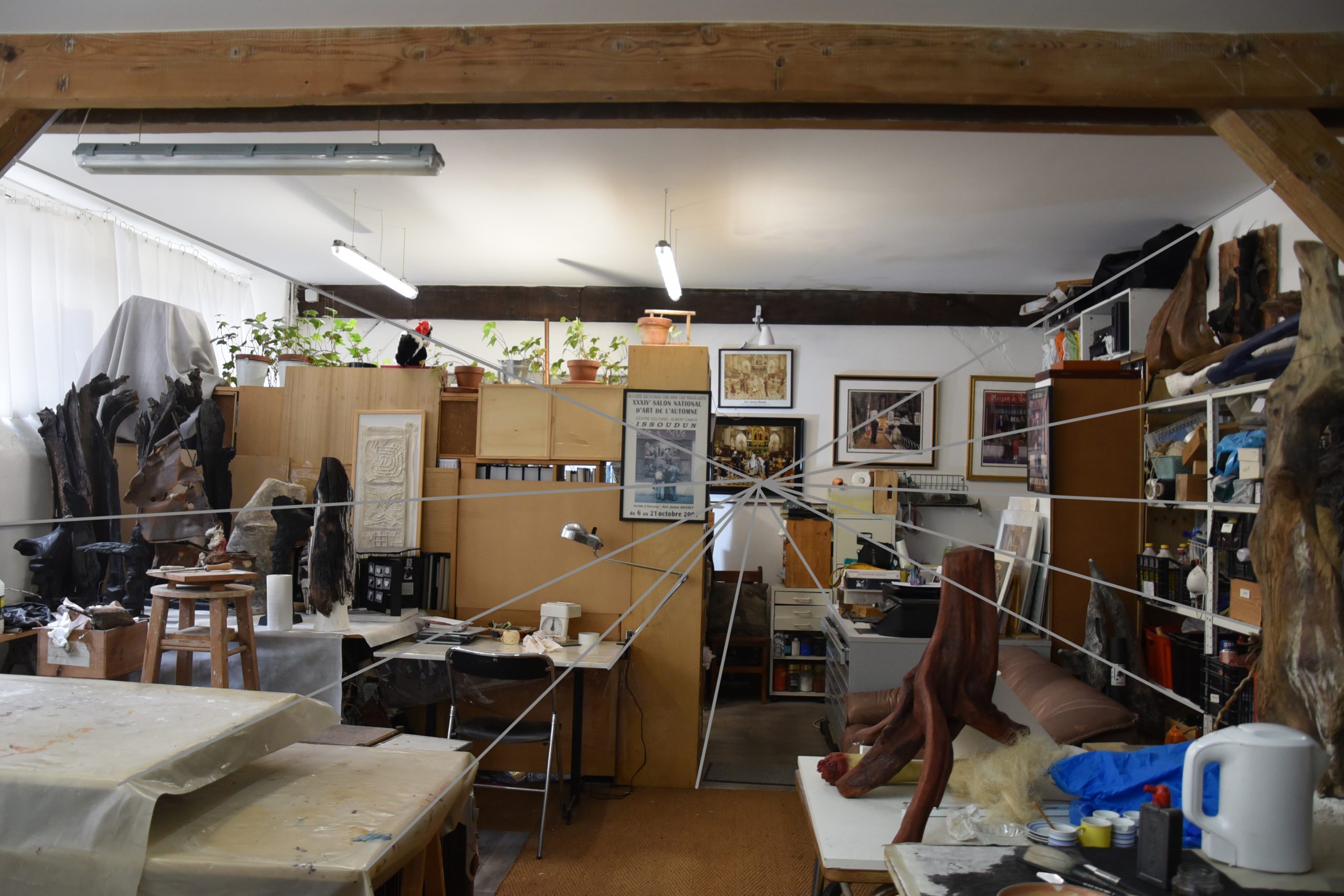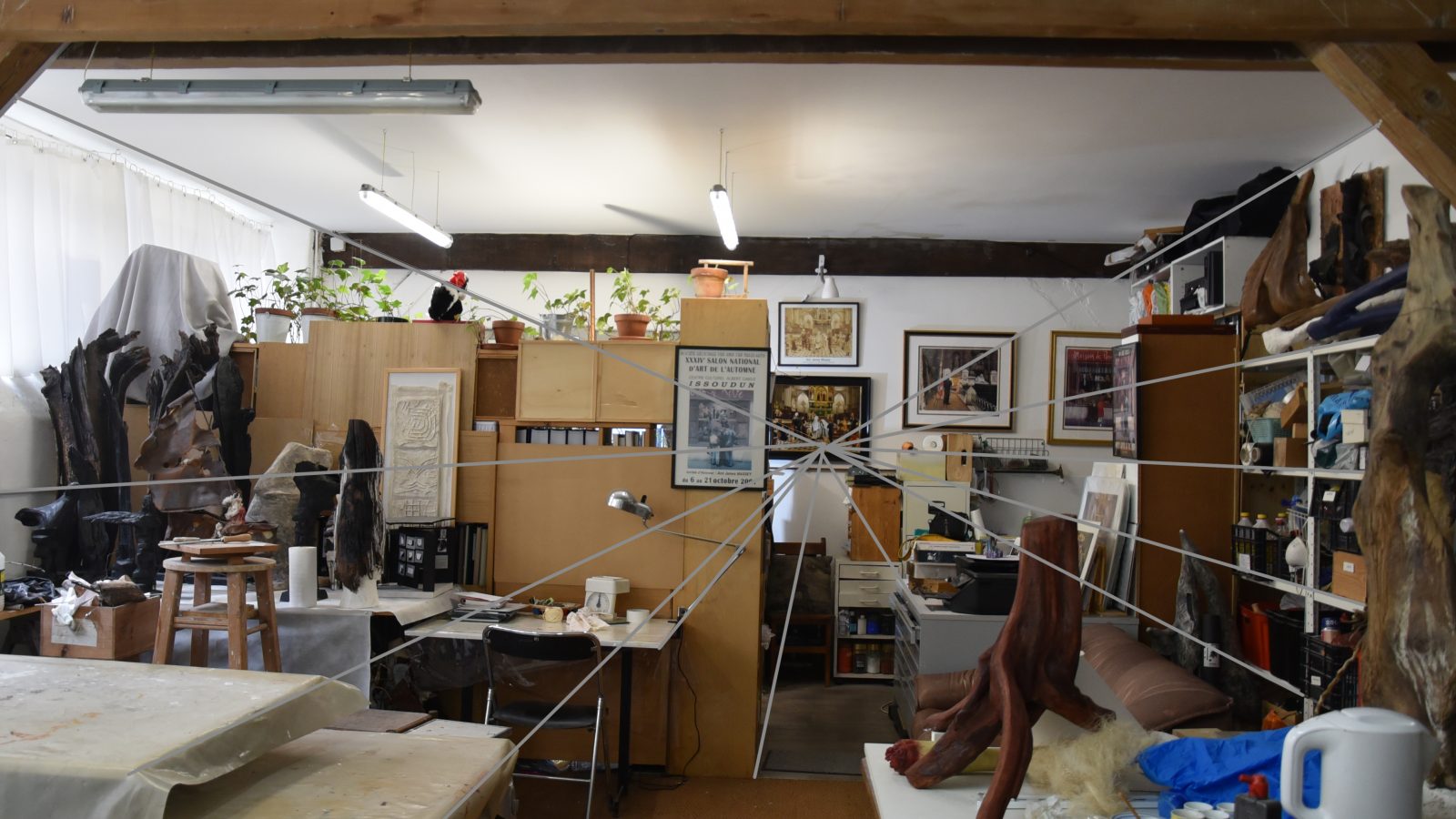Why is it some artists shudder or shy away from learning the basics of perspective saying it is just too complicated?
But it’s not really…and certainly the basic principles are there for anyone to see and apply.
Let’s just look at the simplest and main law: things that are further away from you will appear to be smaller.
Ta da! Couldn’t be easier and yet start looking at artwork with that idea in mind and you will see breaches of the obvious everywhere.
For example: Which house below is quick sketched correctly?

If you chose the second one, you are already understanding that first rule of perspective. The front corner of the house is the closest edge to you, so the two farther corners should be smaller, which they are in both drawings. But what about the roof? The eave is closer to you than the apex of the roof. Therefore, the line of the eave should be slightly longer than the ridgeline, which is not the case in the first sketch. In fact, it is much larger. Such a simple premise. You would guess correctly that this common error is one of my pet peeves in art.
Also, notice I have utilized a quick little trick to find the middle of a side (or plane) in perspective. Just draw lines from corner to corner and where they intersect is the perspective middle point. Draw a straight line upward and you have the placement for the middle of the roof. You can see that the first half of the side is slightly larger than the second.
What is another easy tell?
Two or more lines that are parallel to each, but not to you, will eventually meet at a point.
That means that if you have two or five or twenty edges that are going in exactly the same direction and if they extended indefinitely, they would converge at the same point, vanishing before your eyes. Thus the term “vanishing point.” Think of railway tracks stretching to the horizon.
So, let us take a simple room in one point perspective (meaning you are looking straight into the room and not at an angle) and see if this works. Yep. It does not matter if the edges are inside or outside the room, if they are parallel, they will converge at the same point…which is on the height or level of your eyes. Thus the term “eye level line.” As long as the edges are also parallel to the ground, the vanishing point at which the lines meet will be on that eye level line.

Photo ©2018 Ann James Massey
In the case of the roof lines of the house sketch above, the angles of the roof are not parallel to the ground, but they are still parallel to each other so the vanishing point for those lines is in the air. There is a way to find that angle exactly but that will be in a more detailed explanation.
If we take a more complicated room, it still works…just look for those parallel lines.

Photo ©2022 Ann James Massey
What are the basic rules to perspective?
Items in linear perspective that are closer to you will appear to be:
Larger
More detailed
Lower on the surface below eye level
Higher on the surface above eye level
Overlapping in front (be sure to allow for the volume of the objects)
In aerial perspective (as in landscapes) areas come forward with:
Warm colors
Brighter colors
Darker colors (given the same overall light source)
Just apply the reverse to make items appear further away.
For detailed explanations with line illustrations on the basics of perspective, you can refer to that chapter from my booklet Simplified Basics of Drawing.
Note: Did you notice my spider lines in the house sketches above? I often do that in my first gestural sketches (under 3 minutes or 20 seconds in this case), then clean up the edges as I correct and refine it. One of my teachers said I would never be an artist drawing like that. I hope you disagree with him. Don’t ever believe art instructors who say you cannot be an artist because your natural “handwriting” is different than theirs. Learn all you can about art, but develop your own style.
© 2022 Ann James Massey, SWA, CPSA, UKCPS, AAPL
Support the Artist
If you enjoy Ann’s artwork, articles, or anecdotes and would like to support her with a donation, please feel free to do so here.



